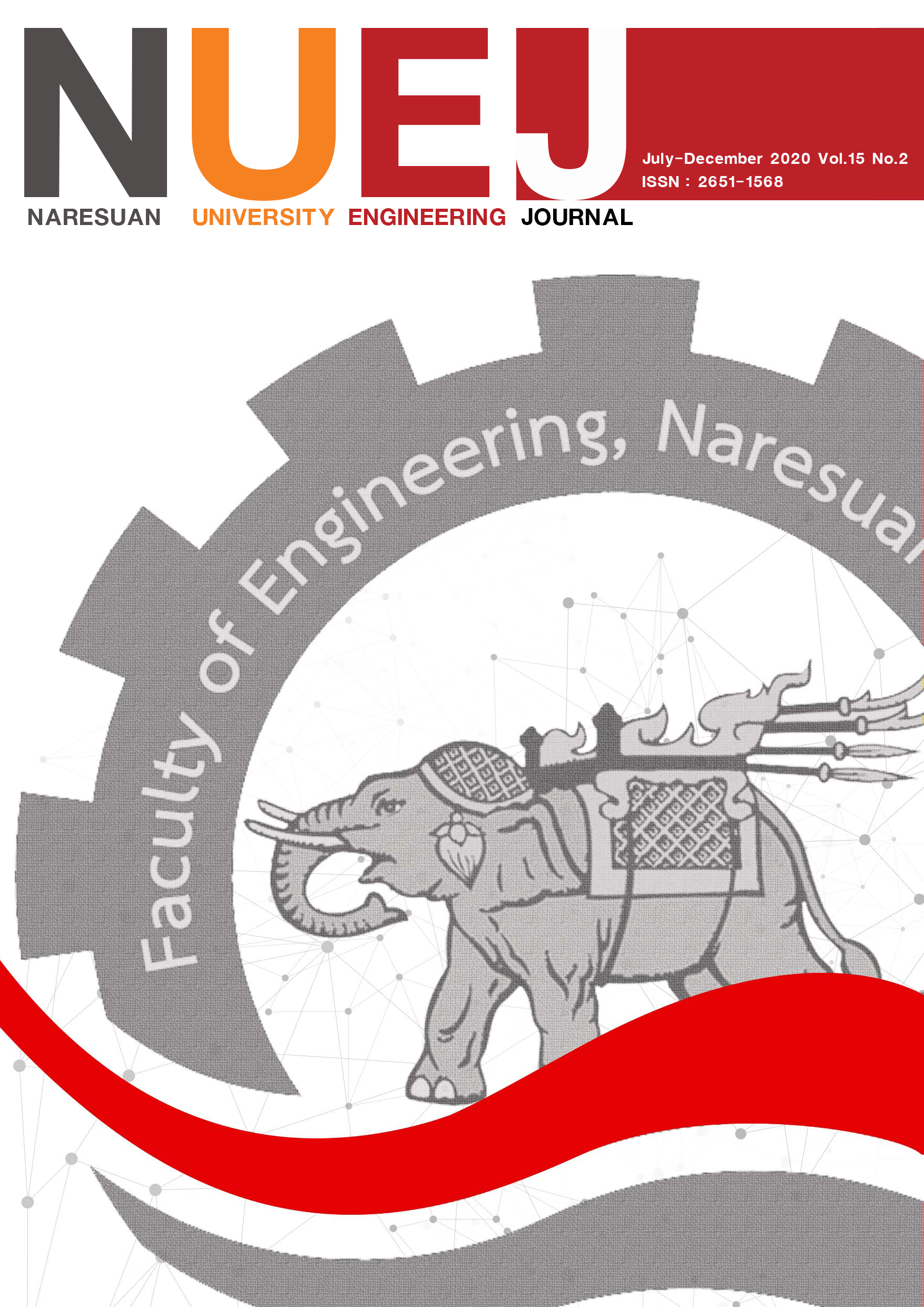การคำนวณเชิงตัวเลขเพื่อหาขนาดวิกฤติของตำหนิเริ่มต้นในรอยเชื่อมชนวาบของรางรถไฟ
Main Article Content
บทคัดย่อ
ตำหนิที่เกิดขึ้นบริเวณรอยเชื่อมชนวาบของรางรถไฟ อาจเกิดระหว่างการเชื่อม และ/หรือ เกิดระหว่างการใช้งาน ตำหนิเหล่านี้เป็นอันตรายต่อรอยเชื่อมชนวาบของรางรถไฟ โดยขนาดของตำหนิที่ทำให้เกิดการขยายตัวของรอยร้าวล้า เรียกว่า ขนาดวิกฤติของตำหนิเริ่มต้น งานวิจัยนี้ได้ทำการศึกษาขนาดวิกฤติของตำหนิเริ่มต้นบริเวณรอยเชื่อมชนวาบด้วยทฤษฎีกลศาสตร์การแตกหักแบบยืดหยุ่น เชิงเส้น และระเบียบวิธีไฟไนต์เอลิเมนต์ โดยศึกษาตำหนิแบบรอยร้าวครึ่งวงกลมบริเวณด้านล่างของราง ซึ่งเป็นตำแหน่งที่รับโมเมนต์ดัดสูงสุดภายใต้แรงกดของล้อรถไฟ พบว่า ค่าพิสัยตัวประกอบความเข้มของความเค้นบริเวณตำหนิ เท่ากับขอบเขตค่าพิสัยตัวประกอบความเข้มของความเค้นของเหล็กกล้ารางรถไฟ เมื่อตำหนิเริ่มต้นวิกฤติมีขนาดประมาณ 2 มม. ซึ่งส่งผลให้รอยร้าวล้าสามารถขยายตัวจากตำหนิเริ่มต้นนี้ได้ ผลที่ได้เป็นประโยชน์ต่อวงการวิชาการด้านวิศวกรรมระบบราง โดยสามารถใช้เป็นแนวทางในการซ่อมบำรุง และปรับปรุงการเชื่อมชนวาบของรางรถไฟ
Article Details
References
ABAQUS User’s Manual. (2016). Abaqus/Standard. ABAQUS.
Beretta, S., Boniardi, M., Carboni, M., & Desimone, H. (2005). Mode II fatigue failures at rail butt-welds. Engineering Failure Analysis, 12(1), 157-165.
BS EN 13674-1: Railway applications - Track - Vignole railway rails 46 kg/m and above. (2002). In British-Adopted European Standard
BS EN 14587-1: Railway applications - Track - Flash butt welding of rails - Part 1: New R220, R260, R260Mn and R350HT grade rails in a fixed plant. (2007). In British-Adopted European Standard.
Cannon, D. F., Edel, K. O., Grassie, S. L., & Sawley, K. (2003). Rail defects: an overview. Fatigue & Fracture of Engineering Materials & Structures, 26(10), 865-886.
D 4.6.1. The influence of the working procedures on the formation and shape of the HAZ of flash butt and aluminothermic welds in rails. (2009). International Union of Railways (UIC).
Desimone, H., & Beretta, S. (2006). Mechanisms of mixed mode fatigue crack propagation at rail butt-welds. International journal of fatigue, 28(5-6), 635-642.
Iwafuchi, K., Satoh, Y., Toi, Y., & Hirose, S. (2004). Fatigue property analysis of rail steel based on damage mechanics. Quarterly Report of RTRI, 45, 203-209.
Kitagawa, H., & Takahashi, S. (1976). Applicability of fracture mechanics to very small cracks or the cracks in the early stage [Paper presentation]. Mechanical Behavior of Materials, American Society for Metals, Metals Park, Ohio.
Lewis, R.& Olofsson, U. (2009). Wheel-rail interface handbook. Elsevier.
Maya-Johnson, S., Ramirez, A. J., & Toro, A. (2015). Fatigue crack growth rate of two pearlitic rail steels. Engineering fracture mechanics, 138, 63-72.
Ozakgul, K., Piroglu, F., & Caglayan, O. (2015). An experimental investigation on flash butt welded rails. Engineering Failure Analysis, 57, 21-30.
Suresh, S. (1998). Fatigue of materials. Cambridge university press.

